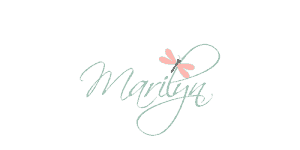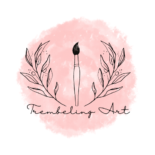When I first started painting, I figured I needed all the tools for acrylic painting to paint well. “This paint palette will help me organize my paint,” Or “this brush will help me make better marks.” The truth is that tools don’t make the artist; making art does.
The main supplies you need to get started with acrylic painting are paint, brushes, some type of palette to hold your paint, a surface to paint on, a water jar, and something to wipe your brushes and clean up spills.
However, there are a few things, other than paint, brushes, and canvas, that you may eventually want to purchase to make your art life a little easier. Here are a few good tools for acrylic painting, some of which you can make yourself.
**This page may contain affiliate links to products I have used or recommend. If you purchase something from this page, I may receive a small percentage of the sale at no extra cost to you. For more information click here.**

Palettes for Acrylic Painting
You can use just about anything to hold and mix your paint while painting: paper or Styrofoam plates, empty plastic containers, old ceramic dishes, or anything that will prevent the paint from bleed through and give you enough room to mix colors.
When you are ready to purchase some type of palette, there are several options.
Plastic Palettes:
These are fairly inexpensive, lightweight, and come in a variety of shapes and sizes. They usually contain wells or partitions to separate your paint and an area for mixing.
Most are easy to clean. However, the cheaper dollar-store ones tend to stain.

Palette Paper:
Palette paper is a pad of paper with a glossy texture on one side. It is meant for one-time use, and while not expensive, the cost can add up over time. Palette paper is also not great for the environment, but it has its uses, so I always keep a pad on hand in my studio.
Palette paper is handy, for example, when you run out of mixing room on your palette.
Plexiglass:
Plexiglass palettes are clear acrylic plastic that come in various shapes and sizes. They work fine for acrylics and are lighter than glass but can be difficult to clean once the paint has dried on them.
Glass:
Glass palettes are made from tempered glass, so they will not shatter into a million pieces if dropped. They are an excellent palette to work from and are easy to clean. Dried paint scrapes off easily with a blade or paint scraper, and they can be washed with soap and water.
Glass palettes are heavy, so they are usually laid on a table or workbench. Although they can be pricey, they are wonderful to work with.
Wood:
The traditional wood palette is not very common anymore. They were used for centuries because of their durability and were easy to hold. Oil painters still use them, but they are not recommended tools for acrylic painters.
It is almost impossible to clean acrylic paint off wood, and the wood absorbs the moisture from the paint.
If you want to use a wooden palette, you need to coat it with several coats of sealer to protect the wood and make cleanup a little easier.
For more information on palettes, see my post on choosing the best paint palette.
Wet Palettes:
Wet palettes are probably one of the best tools for acrylic painting. They consist of a container with a lid, a sponge, and a sheet of palette paper.
You soak the sponge in water, wring it out so it is not sopping wet, and then place it in the container. The palette paper usually needs to be soaked in hot water for about 10 minutes and then placed on top of the sponge.
You can add your paint on top of the paper and mix your colors. When you are done painting for the day, place the airtight lid on the container, and your paint and mixes will be ready for your next session.
Wet palettes are ideal for acrylics since they keep them moist and workable for up to a week. I use the Masterson Sta Wet Palette since I can only paint for short blocks of time.
This palette will keep my paint from drying, saving me money and the frustration of wasted paint.
Make Your Own Wet Palette
To make your own wet palette, all you need is a shallow container with a tight-fitting lid, a sponge cloth or a few layers of paper towel, and some palette or parchment paper.
Cut the sponge or paper towel to fit your container. Cut the palette paper or parchment paper to the same dimensions. Wet the sponge and put it in the container.
If using a paper towel, I find it easier to put the dry paper towel into the container and add water. You can squeeze out some of the water by pressing with your fingers and pouring the excess off. This keeps you from struggling with crumbled paper towels.
Soak your parchment paper in hot water for about 10 minutes and place it in the container. Now, you have your own economical wet palette.
Brush Basins
Any glass jar makes a good brush basin. Ideally, you should have two…one for cleaning your brushes and one with clean water for diluting paint.
There are also many types of plastic brush basins on the market, ranging from cheap to “Are You Serious!”
Brush basins come in different shapes and types of plastic. Some have a divided interior so you can separate clean and dirty water.
Some basins have holes to stand your brushes up in and lids to keep the interior dust-free.
I use a cheap round brush basin because I tend to knock over glass jars. The round basin is more stable and has groves at the bottom for cleaning paint off the brushes.

Painting Easels

Easels are one of the most helpful tools for acrylic painting. You can paint flat on a table, but it is tiring on your neck and shoulders. Using an easel is better for your posture and gives you a better perspective on your painting and better light.
Free Standing Easels
If you have the room, you can purchase a free-standing easel that can easily accommodate large canvases. These range from 3 legged, foldable A-frame easels to more sturdy and expensive types with a square base.
You can stand at this easel or sit in front of it with a stool. (I use a comfy adjustable bar stool to move it up or down to the level I am painting on the canvas).
Table Top Easel
A tabletop easel is perfect for almost any area. It can sit on most tables or benches and doesn’t take up a lot of space.
They come in various styles and price ranges and are generally portable. The downside is that they can usually only accommodate canvases up to 32 inches (approximately 80 cm).
If you like working on large canvases, a free-standing easel would be a better choice.
Plein Air Easel
There are also easels specifically designed for painting outdoors and are referred to as Plein Air easels. En Plein air is a French term meaning in the open air.
Some types are wooden or aluminum and have a shape similar to a tripod. They are very portable and fold for easy transport.
Other types are usually wooden and contain a drawer or box underneath for storage. Sometimes a small table on the side is used for mixing paint. They usually fold up into a box for easy carrying.
If you would like to learn more about Plein air painting, the Artist Network has a great article about the history of Plein air and some tips to get started painting outdoors.
For more information on easels, see my post on choosing the best easel for your painting style.

Painters Tape
Low-tack painter’s tape is a good thing to have on hand. You can use it to tape painting paper to a board to keep it from warping.
Low-tack tape can also hold your tracing paper if you are using it to transfer your reference photo, and you can also use it to tape your reference photo to your easel or wall.
You can also use tape to mark off areas of your painting. Be careful when taping previously painted areas, as tape can lift the paint if it is not completely dry.
If you cannot find low tack tape, use regular masking tape that you have stuck to your clothing a few times to lessen the stickiness.
Spray Bottle
A spray bottle is necessary to prevent your paints from drying out on the palette and to wet your canvas when necessary to help with blending.
A regular spray bottle produces water droplets that are too large for spraying your canvas and can leave blotches. You need a fine mist for this purpose.
I use a thoroughly cleaned, empty body spray bottle. It has a much finer spray, so I just get a light misting on my canvas.
If you are going to use this type of bottle, make sure to give it a good cleaning since the alcohol in the body spray doesn’t play nice with acrylic paint.
Tool Storage
If you paint in a corner of your living room or dining room, storing art supplies can be a problem. Where do you put all your supplies when you need to use the area for its intended purpose?
If you have room and the budget, you can purchase a wooden cabinet with doors and shelving for storing your supplies.
Purchase one that blends with the rest of the room’s furniture. When you finish painting, you can store your supplies in the cabinet out of sight.

A cheaper alternative is to use a storage cart on wheels that can be pushed into a closet or another room when necessary. Several designs are available, so you can choose which one works for you.
Why not browse some yard sales to find a cabinet, you can refinish and make that a piece of art in itself? I have an old filing cabinet I refinished and use in my studio to store drawing paper, canvas boards, and sketchbooks. It looks great and was free.
There will always be things you want to buy for your art practice, like an airbrush or a good camera, but the above items are a good place to start. Everything else will come in time.
I hope these ideas were helpful to you. If you have any other suggestions or questions, please leave a comment.
Web Story: What You Need to Start Painting and What You Don’t





A great. Website and very useful. I am an artist who has a brain injury (BI), as well as progressive supranucleur palsy (psp]. I spent 20 years teaching watercolour painting to other BI survivors and since then have been teaching myself how to use acrylics for the past few years. Anytime I can find info on Acrylics, I appreciate what I can learn. I just read your article on painting trees and it has solved a problem I had! Thank you so much!
Dear Marilyn
Thank you for sharing this post, is very useful for us.
we started a home gallery, we been happy if you see our Artwork:
https://satisfiednerve.com/acrylic-painting/
Thank You For Sharing This post <3
is very useful for us.
All I can say is great work. The effort you put into this is very impressive and I enjoyed every minute of the read… This is good content